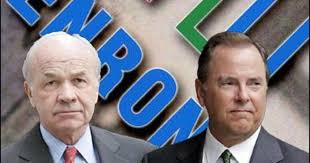Readers expect to get their news for free, on the Internet.


Readers expect to get their news for free, on the Internet.

Former Enron CEO Jeffrey Skilling’s attorney attacks former collegue Andrew Fastow.

Opening arguments are scheduled to begin in Houston.

Bill Ackman is forcing major corporations to grapple with the very aggressive shareholder.

White-collar criminals face far tougher sentencing guidelines than in years past.

KPMG says it set up fraudulent tax shelters for its wealthiest clients.

Malpractice claims are rising as lawyers sue other law firms for malpractice.

Consumers get new choices, more control When Jeff Smulyan, chairman and chief executiveRead More

The NYPD is out in force amid alleged threats of terrorism protest violence.

CEO Dennis J. FitzSimons calls the circulation snafu “unacceptable and wholly out of character.”

The Times said it failed to sufficiently scrutinize the Bush administration’s assertions about Iraq’s “weapons of mass destruction.”

Congress and President Bush appeared poised to move forward on a comprehensive immigration reform bill — until the attacks of 9/11.

Like few entertainers can make people laugh even before they even say anything.

How Washington Redskin owner Dan Snyder let social media take over the conversation.

Some news organizations chose to not publish images of charred American bodies being dragged through the streets of Fallujah, Iraq.

More than 2,900 Kaiser Aluminum employees in Louisiana, Washington and Ohio have been on strike for 20 months.

The media and merchandising mogul is accused of lying to federal agents to cover up a stock sale.

Confused by tougher enforcement procedures, an increasing number of foreign journalists traveling fromRead More

Mexican President Zedillo tries to discredit the rebel leader amid setbacks for his ruling Institutional Revolutionary Party.

Chicago’s WGN-AM said a sharp drop in agriculture advertising forced the station to cancel its long-running farm radio show.

The Prometheus Radio Project, a Philadelphia collective of community media advocates, is the lead plaintiff in a landmark lawsuit.

Neighborhood and minority organizations fear rise in predatory lending, branch closings.

Immigrant and union leaders say meatpackers are bringing Mexicans, Central Americans into the U.S. to work for sub-standard wages.

More than 87,000 Verizon workers are striking for the right to organize the company’s non-union wireless employees.

Lerer says his sites — Thrillist, NowThis, The Dodo and Seeker — get access to millions of Facebook viewers because of the quality of their videos.